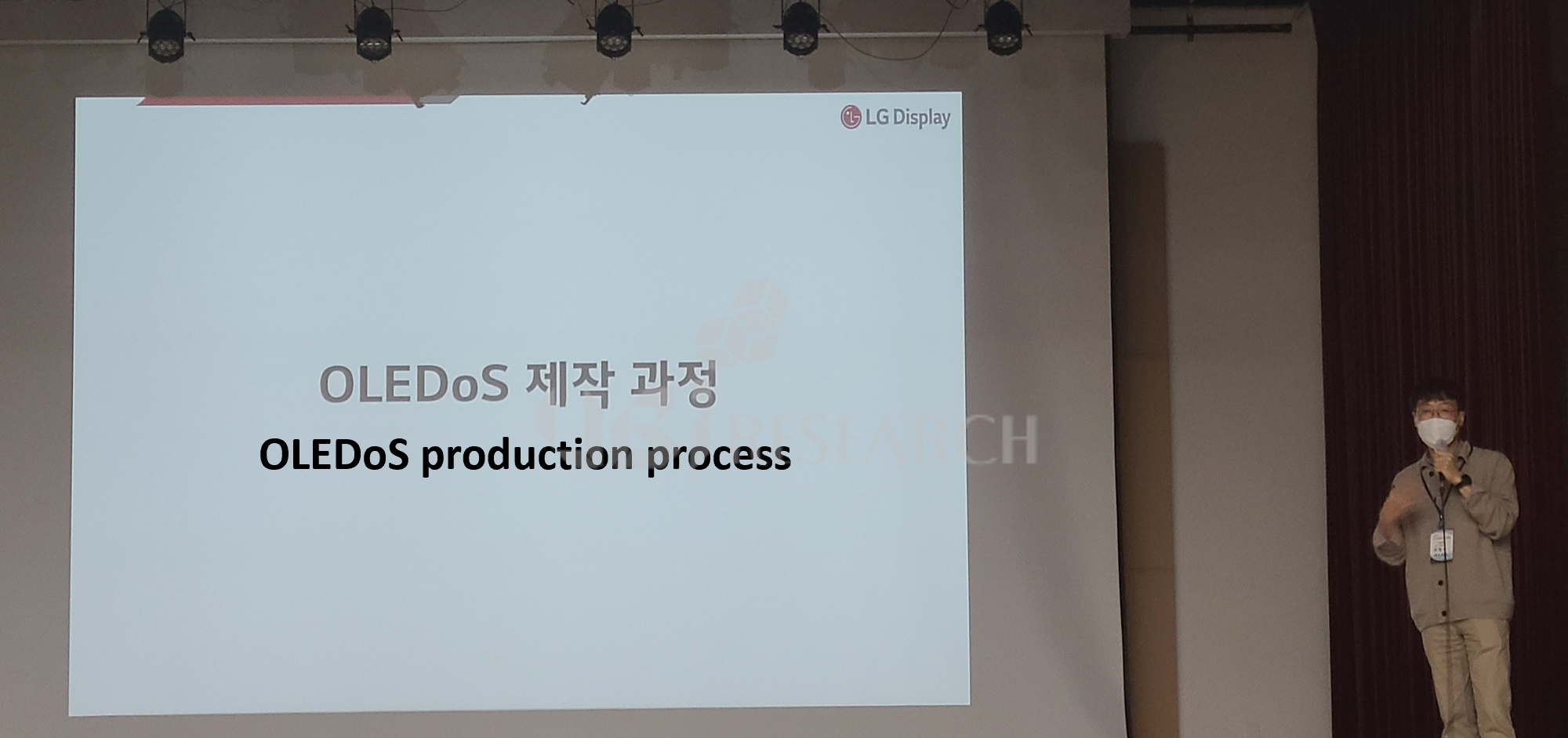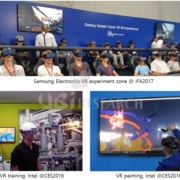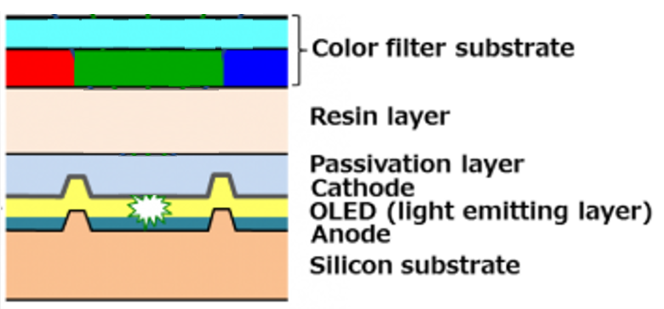LG Display, Already completed development of OLEDoS-applied prototype for VR

LG Display presenting OLEDoS at OLED School
At the 19th OLED School held at Sookmyung Women’s University from February 9th to 10th, Senior Research Fellow Yoo Chung-geun of LG Display announced, “We are developing a set for VR using OLEDoS, and some of the prototypes have already been developed.”
On this day, Research Fellow Choong-Keun Yoo gave a presentation on ‘The Future of OLED Display, Metaverse and Display’. Researcher Yu explained the specifications and technologies required for micro displays such as metaverse and VR/AR, and said, “In general VR devices, luminance of 10,000 nits or more and AR devices require luminance of 100,000 nits or more, but it is difficult to apply this to OLEDoS. Currently, the display for AR developed by LG Display has achieved a brightness of over 7,000 nits and a resolution of 3,500 ppi.”

LG Display OLEDoS Manufacturing Process
3500ppi or higher OLEDoS being developed by LG Display requires ultra-high-definition patterns, so Si-wafer backplane and WOLED + CoE technology must be applied, so cooperation with semiconductor foundries is essential. Research Fellow Yu explained, “For high-resolution OLEDoS, semiconductor foundries have no choice but to make display backplanes through wafers.”
Finally, researcher Yoo said, “We are developing a set for VR using OLEDoS, and it is planned to be released soon. We are developing products for major IT companies such as Apple, Google, and Meta, and some prototypes have already been developed.” He continued, “It takes more time to supply products that meet consumer needs, such as brightness of 10,000 nits or more, but it is possible to produce better VR devices even with 3500ppi class OLEDoS, which has now been developed.” When asked if the next actual product supply time was right before September, he replied, “There is nothing planned yet.”


 AMOLED Manufacturing Process Report Ver.5 Sample Download
AMOLED Manufacturing Process Report Ver.5 Sample Download

